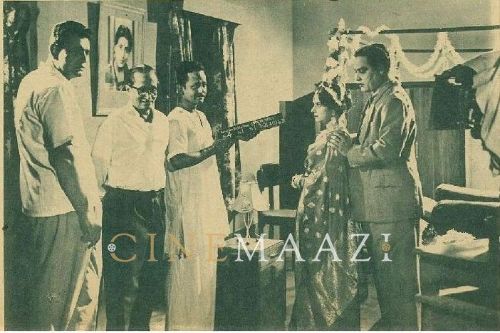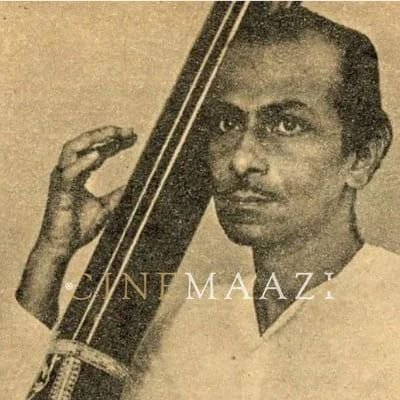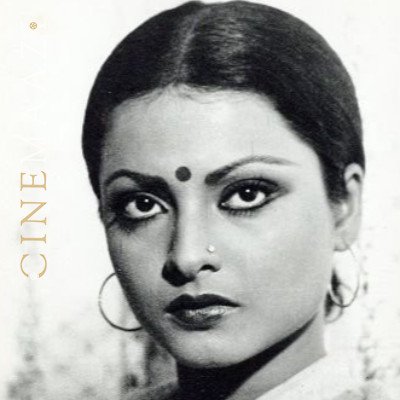Manmohan Singh
Subscribe to read full article
This section is for paid subscribers only. Our subscription is only $37/- for one full year.
You get unlimited access to all paid section and features on the website with this subscription.
Not ready for a full subscription?
You can access this article for $2 , and have it saved to your account for one year.
- Primary Cinema: Hindi
A well-known and award-winning cinematographer of Hindi films, director Manmohan Singh is considered a pioneer of change in the Punjabi film industry, by virtue of his films such as Jee Aayan Nu (2003), Asa Nu Maan Watna Da (2004) and Yaaran Naal Bahaaran (2005). Among the many popular films he cinematographed are Dilwale Dulhaniya Le Jayenge (1995), Darr (1993), Mohabbatein (2000), Mera Pind: My Home (2008), and Ik Kudi Punjab Di (2010). He has close to 50 films to his credit as a cinematographer, while his 12 directorials include Pehla Pehla Pyar (1994), Jee Aayan Nu (2003), Dil Apna Punjabi (2006), and Aa Gaye Munde UK De (2014). In the past, he had frequently collaborated with Yash Chopra and his son Aditya Chopra, for whom he shot Chandni (1989), Lamhe(1991), Darr (1993), Dilwale Dulhania Le Jayenge (1995), Dil To Pagal Hai (1997), and Mohabbatein (2000), as well as with Gulzar on some of his directorials. His Punjabi film directorials most often starred Harbhajan Mann in the lead. Awards he has won include the Filmfare award for best cinematography respectively for Chandni (1989) and Darr (1993), the Zee Cine award for best cinematography for Dil To Pagal Hai (1997), the Sansui viewers’ choice award for best cinematography for Mohabbatein (2000) and the Lifetime Achievement Award at the PTC Punjabi Film Awards in 2019.
Starting his career as a cinematographer in the 1970s, among the early films Singh cinematographed are Ghashiram Kotwal (1976), Videsh (1977) and Ahsaas (1979). Ghashiram Kotwal, written by Vijay Tendulkar and directed by K Hariharan, Mani Kaul and Saeed Akhtar Mirza, told the tale of Nanasaheb Phadnavis, the prime minister and real power of the Peshwa Maharaja, 1773-1797, to make a comment on Indian political history. Videsh was an action crime drama directed by Avtar Bhogal set during the emergency, while Ahsaas was a romantic drama directed by Surindara Suri and starring Shashi Kapoor, Simi Garewal and Rakesh Bedi.
The 1983 romance film Betaab directed by Rahul Rawail was his first big project as cinematographer. It marked the debut of Sunny Deol, in a story penned by Javed Akhtar about two youngsters who fall in love but face obstacles from their families. The film went on to be one of the biggest hits of the year.
Post-Betaab, Singh worked on many big-ticket films. Chandni, the Yash Chopra romantic drama which he cinematographed, starred Sridevi, Rishi Kapoor and Vinod Khanna. It told the tale of Chandni, who is left shattered as her love Rohit disappears from her life. She meets Lalit and they befriend each other until Rohit knocks on her door. The film had all the hallmarks of what came to be known as the "Yash Chopra style" – heroine-oriented, romantic, emotional, depicting the lifestyle of the super-elite, with melodic music used in songs picturised in foreign locations. It was a widespread critical and commercial success and became one of the highest-grossing Hindi films of 1989, while its soundtrack became the best-selling album of the year as well as the decade. A visual feast, it also earned Singh the Filmfare award for best cinematography. Speaking about his work in the film, Singh said, “We knew from the title and the story of a beautiful girl that we wanted to give the effect of a moonlit night and her beauty. It's much easier with a good actress like Sridevi.”
He went on to cinematograph a host of popular and well-appreciated films such as the Sridevi-starrer Chaalbaaz (1989) directed by Pankaj Parashar; Lekin (1990), the drama mystery directed by Gulzar; Lamhe (1991), the romantic drama directed by Yash Chopra; and the critically acclaimed and commercially successful Darr (1993) directed by Yash Chopra. About working with Chopra, Singh would later say, “The complete frame is beautiful, not just the face. A good frame can make any artist look good. Yashji makes everything look beautiful.”
Dilwale Dulhaniya Le Jayenge, which he cinematographed in 1995, marked the directorial debut of Aditya Chopra. The romantic drama told the tale of Raj and Simran who meet in Europe. It isn't love at first sight but when Simran moves to India for an arranged marriage, love makes its presence felt. It went on to become the highest-grossing Indian film of the year and one of the most successful Indian films in history. It won 10 Filmfare Awards as well as the National film award for best popular film providing wholesome entertainment. The film was praised for connecting with different segments of society by simultaneously promoting strong family values and the following of one’s own heart. The film displayed a wide range of locations from the European journey scenes and songs mainly filmed in Saanen, Montbovon and Gstaad, Switzerland, and scenes shot in England at Trafalgar Square, King's Cross railway station and Angel Underground station. A regular collaborator with the Chopras, Singh shot the song Tujhe dekha to, including the iconic mustard fields’ scenes with Shah Rukh and Kajol in the mustard fields in Gurgaon on the outskirts of NCR.
In 1996, he cinematographed Maachis - the Gulzar-directed realistic, hard-hitting portrayal of terrorism and youth in the Punjab after the 1984 riots. It starred Om Puri, Tabu and Chandrachur Singh.
Dil To Pagal Hai (1997) saw him work on the Yash Chopra-directed grand musical about three passionate and dreamy characters - Rahul, Pooja and Nisha yearning for their dreams to come true, and to find their true love. It starred Shah Rukh Khan, Madhuri Dixit and Karisma Kapoor.
He cinematographed the politically charged drama film Hu Tu Tu (1999) directed by Gulzar, starring Nana Patekar, Sunil Shetty and Tabu, followed by the Aditya Chopra-directed romantic drama Mohabbatein (2000), about the battle between love and fear, between two stubborn men and their opposing beliefs and the outcome of the love stories of three couples.
The Meghna Gulzar-directed Filhaal (2002) saw him cinematograph the romantic drama film starring Tabu, Sushmita Sen and Sanjay Suri. The same year, he also worked on the David Dhawan-directed Hum Kisi Se Kum Nahin, an action comedy headlined by Amitabh Bachchan and Sanjay Dutt.
He also cinematographed Punjabi films like Mera Pind, Ik Kudi Punjab Di and Ajj De Ranjhe (2012).
In 1994, he debuted as director with Pehla Pehla Pyar, a rom-com starring Rishi Kapoor and Tabu. It told the story of Sapna, who runs away from her aristocratic home, fed up with the hatred and family politics. She meets with Raj, who she is attracted to. At first, Raj wants to get rid of her but eventually falls in love with her. Then the two of them have to be on the run as her family finds out where she is after they put up a reward for her whereabouts.
He made a mark with his many Punjabi language directorials. His Jee Aayan Nu (2003) starred Harbhajan Mann, Priya Gill, and Kimi Verma. The plot revolved around the love story of Simar who is from Canada and Inder who is from Punjab, and the odds they need to overcome to stay together.
His directorial Asa Nu Maan Watna Da: In Search of Our Roots (2004) was a romantic drama starring Harbhajan Mann, Kimi Verma, and Neeru Bajwa. It depicted how things change when Calgary-based businessman Kanwaljit Singh Tilon returns to Kapurtala with his family and announces that he will not be returning to Canada but will reside in Punjab permanently.
The comedy-drama Yaraan Naal Baharaan that he directed in 2005, portrayed the story of Navdeep and Harman, two young college students who fall in love, making their life different, beautiful and difficult. The cast featured Jimmy Shergill, Juhi Babbar and Raj Babbar.
Mitti Wajaan Maardi, his directorial of 2007, was a romantic drama wherein, on his deathbed, Surjit (Kanwaljeet Singh) reveals the truth about the stepfamily of his son and requests him to mend the broken ties with them in Punjab. However, the revelation changes Varyam (Harbhajan Mann)'s life.
His 2008 directorial – Mera Pind: My Home told the story of an NRI, who moves to his native village to spread the message of empowerment among the youth. Under his support, Himmat, a young man leads the youth to contribute to the village's development.
Munde UK De (2009), starring Jimmy Shergill, Amrinder Gill and Neeru Bajwa, saw him depict how tradition and culture prevent a UK citizen from getting married to the girl of his choice.
Ik Kudi Punjab Di which he directed in 2010, was a romance genre film starring Amrinder Gill, Jaspinder Cheema and Guggu Gill. The plot revolved around a girl who challenges the male-dominated society of Punjab and wants to be treated at par with the boys.
His 2012 directorial Ajj De Ranjhe starred Aman Dhaliwal, Gurleen Chopra and Gurpreet Ghuggi in a tale about a man who becomes a policeman in Punjab, where corruption runs rampant.
Aa Gaye Munde UK De (2014) saw him direct Jimmy Shergill, Neeru Bajwa, and Guggu Gill in this romantic comedy set in the lush fields of Punjab and the beautiful city of Chandigarh. The film was a sequel to his earlier blockbuster directorial Munde UK De.
PR, his drama genre directorial of 2022, starred Harbhajan Mann, Delbar Arya, and Karamjit Anmol. It revolved around a man who embarks on a journey to find out what happened to his significant other; a young girl who immigrated to Canada to obtain a PR status but has since disappeared and cut off contact with her loved ones.
Singh has also rendered playback for films such as Chann Pardesee (1981), Haan Nu Haan Pyara (1983), Laila (1984), Lava (1985), Waaris (1988), Bhabo (1989), Qurbani Jatt Di (1990) and Kash…Aap Hamare Hote (2003). Songs he has sung include Mere pyar ki umar from Waaris (1988) with Lata Mangeshkar, Jeene de yeh duniya chaahe maar daale from Laava (1985) with Asha Bhosle and Marne se na yun darna from Laila (1984) with Lata Mangeshkar.
Films he has produced include Mera Pind (2008), Ik Kudi Punjab Di (2010), Honour Killing (2014), and Hate Story 2 (2014).








.jpg)




